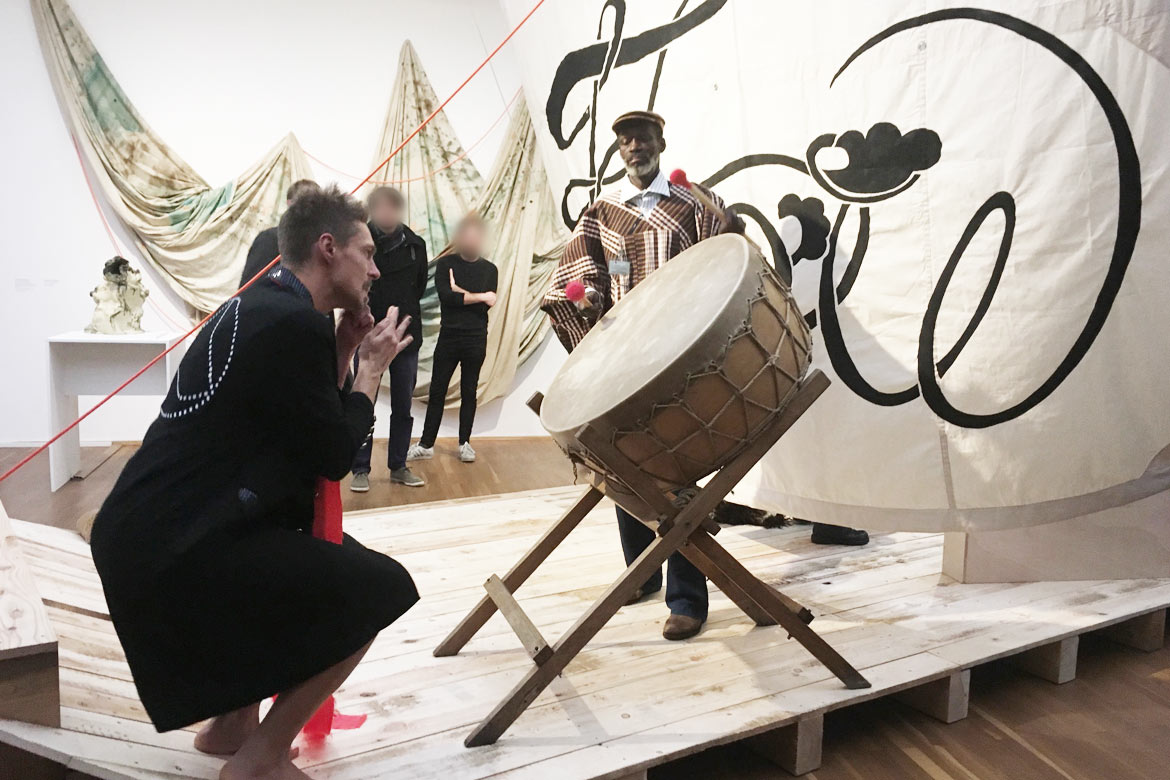NION Community visited Berlin’s beloved contemporary art museum, Hamburger Bahnhof, where an exhibition opening for “How to talk with birds, trees, fish, shells, snakes, bulls and lions” took place. The theme is highly relevant to NION’s vision and philosophy.
“NION believe that we are becoming boundless, conscious beings who share the Earth with the other humans, other non-humans, including the invisible and the inaudible.”
“Retrieve Nature in Berlin and give more space to other-than-human inhabitants who share the same area with humans.”
Likewise, the artists invite their audience to listen to others. It is “to give them space and allow for an undefined flow of meanings.”
The art work consists of multilayers of documentations, literature reviews, discourses with biologists and locals in different regions around the globe, video installations, paintings, sculptures, wooden structures, and live music and dance performances.
One striking art piece amongst others is a wooden ship standing in the central room. All the parts are made of tree trunks, branches, and vines. The ship is obviously a vehicle, a tool, and an object. Nevertheless, because of the juxtaposition with the other art pieces about animals, insects, and plants, the ship sends a clear message that it is the then trees. They were organisms. They were alive. Our daily life is indeed surrounded with numerous living beings and things.
The thing with the things
In Japanese, one pronunciation for the words “person” (者)and “object” or “thing”(物)is the same, “Mono.” Despite the difference in their Kanji characters, it isn’t unusual for Japanese to regard them as one unit, because sounds and pronunciations are highly important in the language. The boundary between the two words is fairly ambiguous. Both a person and an object are written in the same way, “もの” [mo-no] in Hiragana, the original Japanese syllabary before introduction of the Kanji characters. They converge into one.
Another word that means a person in Japanese, “Jin-butsu” (人物), is composed of two Kanji characters: one is 人, which means human, and the other is the already mentioned “thing” 物, this time pronounced as “Butsu”. (A Kanji character can have more than one pronunciations.) Moreover, animals are “Dou-butsu”(動物), a combination of two Kanjis for dynamism and a thing. Plants are “Shoku-butsu” (植物), a combination of two Kanjis for planting and a thing. Minerals are “Kou-butsu” (鉱物), a combination of two Kanjis for metals in soil and a thing. All things in the universe are “Ban-butsu” (万物), a combination of two Kanjis for omini- and a thing. From the Japanese linguistic and mental worldview, humans are sub-categories of “Mono” like the other living beings and things.
The ship is a beautiful reminder of it.


